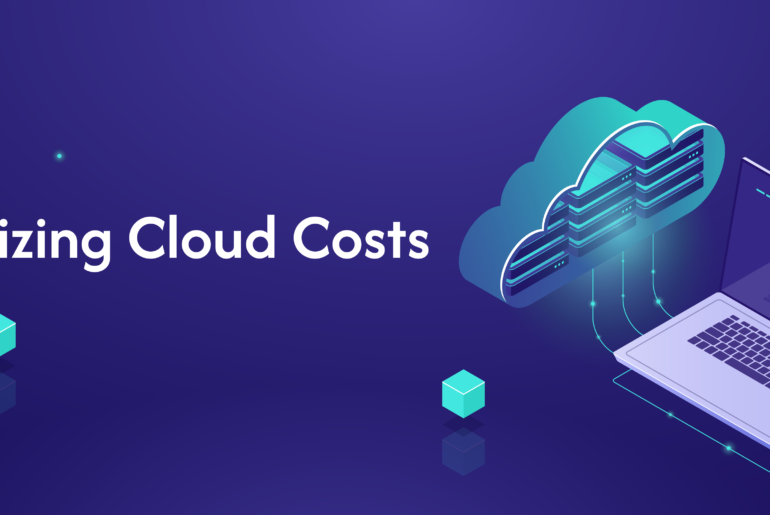In today’s fast-paced corporate climate, agility, scalability, and cost efficiency are critical. Traditional on-premises infrastructures frequently fall short of satisfying these objectives, prompting companies to turn to the cloud—a strong solution that provides exceptional flexibility, scalability, and accessibility. A well-executed cloud migration strategy can enable businesses to improve their operations, streamline processes, and unlock a world of possibilities.
From legacy systems and data security issues to application compatibility and organisational reluctance, enterprises must navigate a complicated landscape to reap the benefits of the cloud. The obstacles may appear enormous, but they are not inevitable.Businesses may overcome these challenges and prepare the path for a smooth and lucrative cloud migration journey with careful planning and execution.
In this article, we will discuss the key challenges associated with cloud migration and provide you with a step-by-step guide to help you overcome these obstacles and achieve a successful cloud migration.
Understanding the Challenges
Challenge 1: Legacy Systems and Applications
One of the primary challenges businesses face during cloud migration is dealing with legacy systems and applications. These outdated technologies often lack compatibility with modern cloud platforms, making it difficult to seamlessly transition data and functionalities. To overcome this challenge, a thorough assessment of your existing systems is essential. Identify critical applications and data that need to be migrated and explore the available cloud solutions that align with your requirements.
Challenge 2: Data Security and Compliance
Maintaining data security and compliance is a top priority for businesses across industries. When migrating sensitive data to the cloud, it is crucial to implement robust security measures and ensure compliance with relevant regulations. To address this challenge, conduct a comprehensive audit of your data and identify any potential vulnerabilities. Implement encryption protocols, access controls, and data backup strategies to safeguard your information during the migration process.
Challenge 3: Performance and Scalability
Another challenge often encountered during cloud migration is ensuring optimal performance and scalability of applications. Cloud platforms offer immense scalability benefits, but improper planning can result in performance bottlenecks and limited scalability. Consider the anticipated workload and traffic patterns to select the appropriate cloud infrastructure and configure it to handle varying demands effectively. Utilize auto-scaling features to ensure seamless performance even during peak usage.
Challenge 4: Application Dependencies and Interdependencies
Applications within your IT ecosystem are often interconnected and dependent on one another. Identifying and managing these dependencies is crucial to maintain application functionality throughout the migration process. Create a detailed inventory of your applications, including their dependencies and interdependencies. Prioritize migration based on these dependencies to ensure a smooth transition and avoid any disruptions to critical business processes.
Steps to Achieve Successful Cloud Migration
Step 1: Define Objectives and Prioritize Workloads
Before embarking on your cloud migration journey, clearly define your objectives and prioritize the workloads to be migrated. Analyze your business requirements, such as cost reduction, scalability, or enhanced collaboration, and align them with the capabilities offered by different cloud providers. This will help you choose the most suitable cloud platform and streamline the migration process.
Step 2: Conduct a Comprehensive Assessment
Perform a comprehensive assessment of your existing infrastructure, applications, and data. This evaluation will provide insights into the compatibility of your systems with the chosen cloud platform. Identify potential risks, bottlenecks, and areas that require optimization. Use this assessment to create a roadmap for migration, outlining the necessary steps and timelines.
Step 3: Develop a Robust Data Migration Strategy
Data migration is a critical aspect of the cloud migration process. Develop a well-defined strategy to ensure the secure and seamless transfer of your data. Determine the migration approach (e.g., lift-and-shift, re-platforming, or re-architecting) based on your requirements and the complexity of your applications. Establish a data migration plan that includes data validation, testing, and a rollback strategy to mitigate any potential risks.
Step 4: Optimize and Prepare Applications for the Cloud
To maximize the benefits of the cloud, it is essential to optimize your applications for the new environment. This may involve refactoring or re-architecting applications to leverage the cloud’s native capabilities fully. Ensure that your applications are optimized for performance, scalability, and cost-efficiency. Conduct thorough testing to validate the functionality of the applications in the cloud environment and address any compatibility issues or performance bottlenecks.
Step 5: Implement Robust Security Measures
Data security should be a top priority throughout the cloud migration process. Implement robust security measures to protect your sensitive information from potential threats. This includes encryption of data in transit and at rest, implementing access controls and user authentication mechanisms, and regular monitoring and auditing of security protocols. Stay updated with industry best practices and compliance requirements to ensure your data remains secure.
Step 6: Plan for Continuous Monitoring and Optimization
Cloud migration is not a one time process but it’s an ongoing process. Establish a monitoring and optimization framework to continuously assess the performance and cost-effectiveness of your cloud infrastructure and applications. Utilize monitoring tools to track resource utilization, identify potential performance bottlenecks, and make necessary adjustments. Regularly review and optimize your cloud deployment to align with evolving business needs.
Step 7: Train and Educate Your Team
A successful cloud migration strategy involves the collaboration and knowledge of your entire team. Provide training and educational resources to your employees to familiarize them with the new cloud environment and technologies. Encourage them to adapt to the changes and leverage the benefits offered by the cloud. Foster a culture of continuous learning and improvement to maximize the value of your cloud investment.
Cloud migration can be a complex undertaking, but with a well-defined cloud migration strategy and careful execution, you can overcome the challenges and achieve a successful transition. By understanding the challenges associated with cloud migration, prioritizing workloads, conducting thorough assessments, and implementing best practices for data security, performance optimization, and scalability, you can ensure a smooth and efficient migration to the cloud. Remember to continuously monitor and optimize your cloud environment to adapt to changing business needs and maximize the benefits of the cloud. Embrace the power of the cloud and propel your business forward in the digital era.




